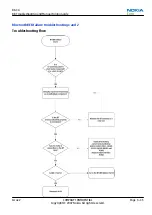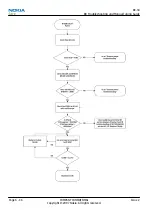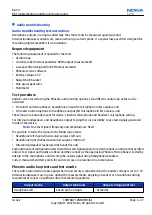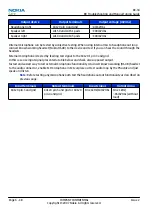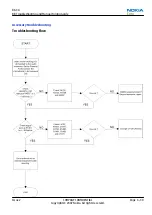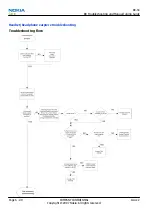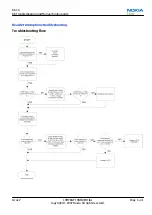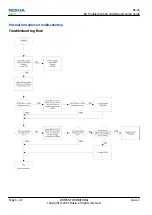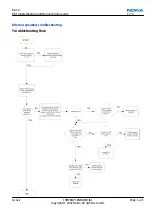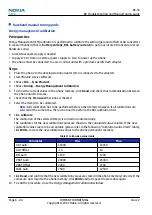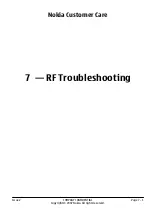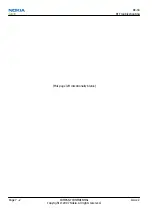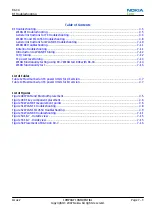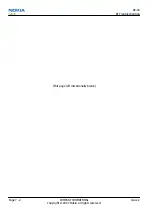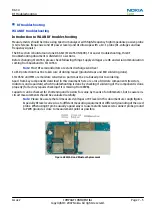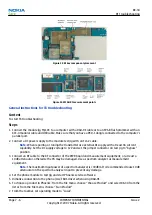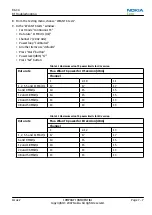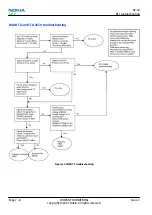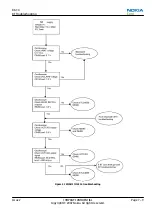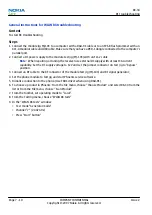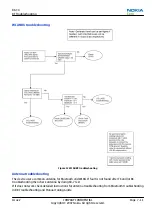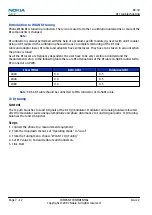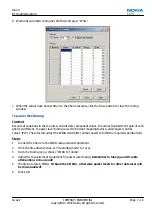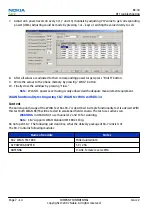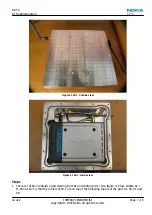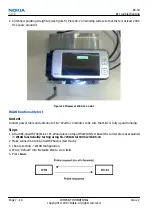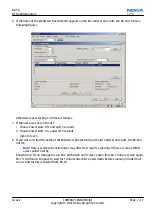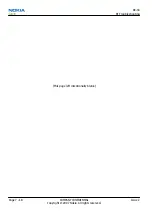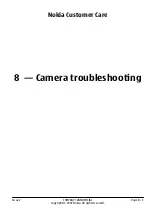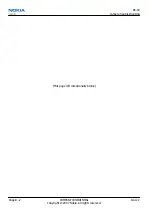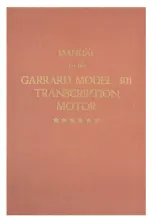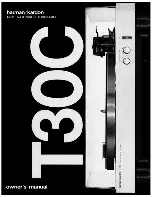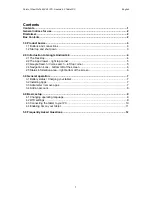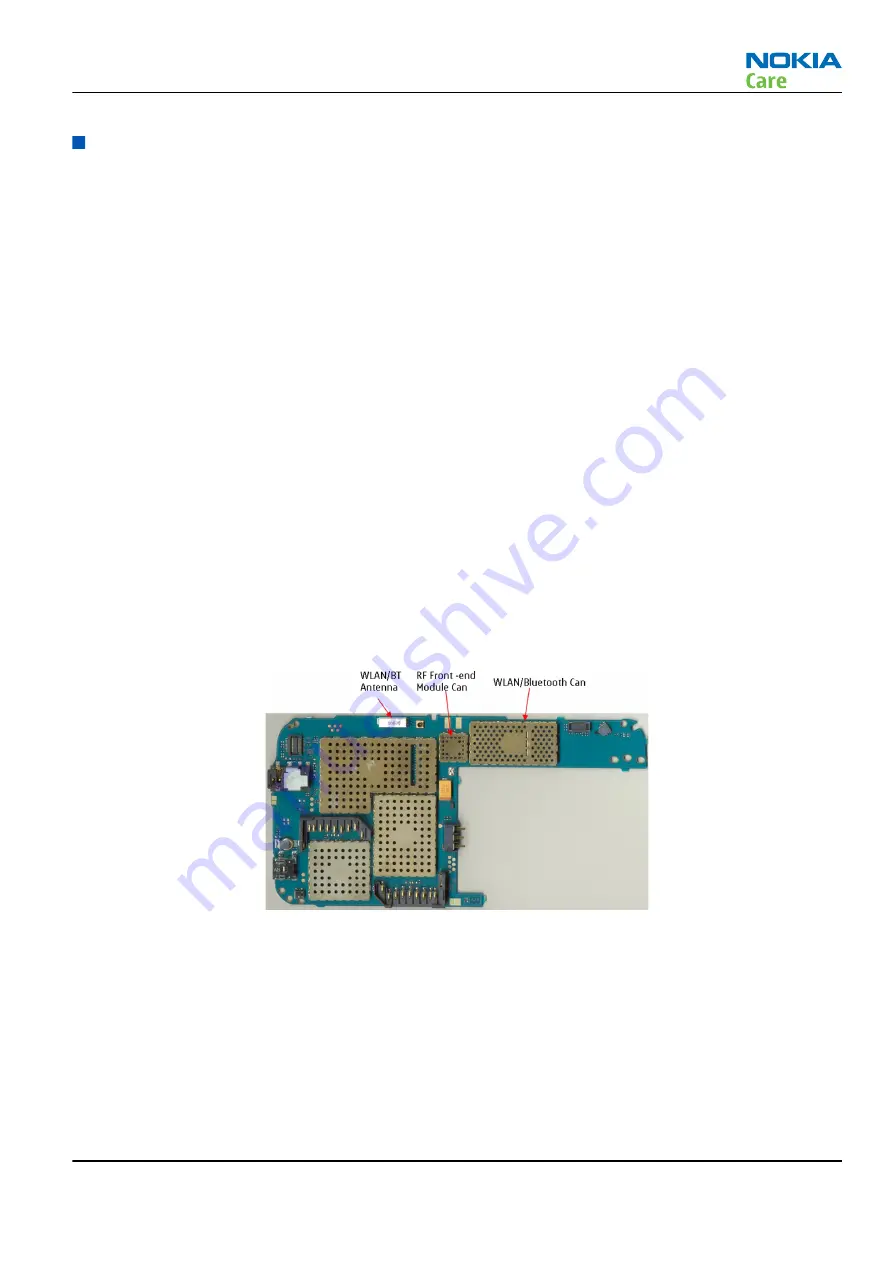
RF troubleshooting
WLAN RF troubleshooting
Introduction to WLAN RF troubleshooting
Measurements should be done using Spectrum analyzer with high-frequency high impedance passive probe
(LO-/reference frequencies and RF power levels) and Oscilloscope with a 10:1 probe (DC-voltages and low
frequency signals).
The RF-section is build around one RF-ASIC (STLC4550 N6300). For easier troubleshooting, this RF
troubleshooting document is divided in to sections.
Before changing STLC4550, please check following things: Supply voltages are OK and serial communication
coming from baseband to STLC4550.
Note:
Most RF semiconductors are static discharge sensitive!
So ESD protection must be taken care of during repair (ground straps and ESD soldering irons).
STLC4550 and FEM are moisture sensitive so parts must be pre-baked prior to soldering.
Apart from key components described in this document here are a lot of discrete components (resistors,
inductors and capacitors) which troubleshooting is done by checking if soldering of the component is done
properly (for factory repairs checking if it is missing from PWB).
Capacitor can be checked for shortening and resistors for value by means of an ohmmeter, but be aware in-
circuit measurements should be evaluated carefully.
Note:
Please be aware that all measured voltages or RF levels in this document are rough figures.
Especially RF levels varies due to different measuring equipment or different grounding of the used
probe. When using RF probe usually a good way is to use metallic tweezers to connect probe ground
to PWB ground as close to measurement point as possible.
Figure 48 WLAN and Bluetooth placement
RX-34
RF Troubleshooting
Issue 2
COMPANY CONFIDENTIAL
Page 7 –5
Copyright © 2007 Nokia. All rights reserved.

